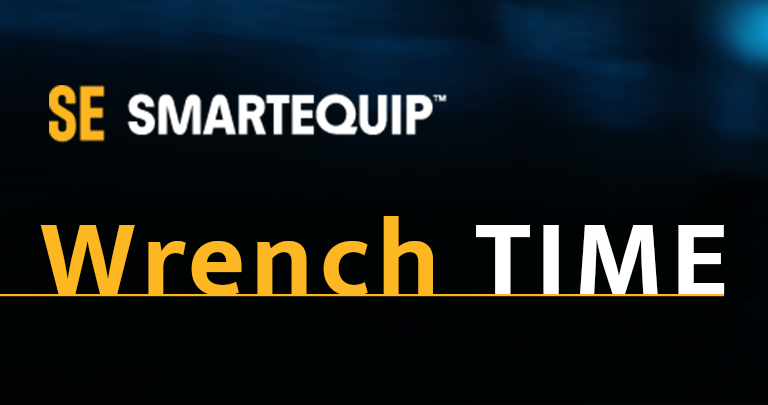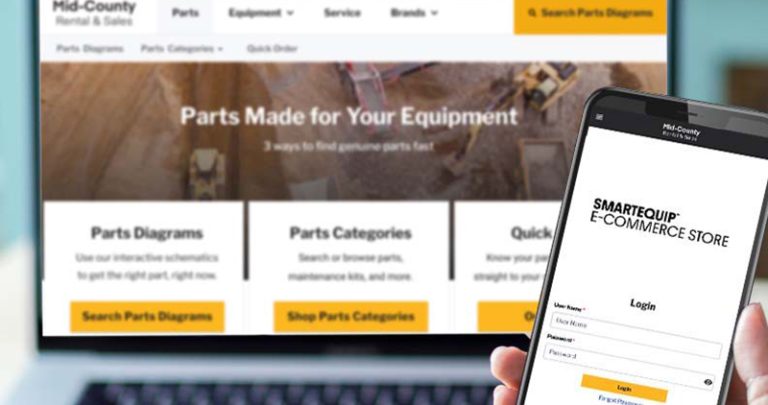
When a machine goes down, the clock starts ticking. The ability for you to find and secure a replacement part in a timely manner has a much larger impact on the profitability of an asset than you might think when taking into account the billings, workflow and the profits affected by its downtime.
It’s a much more complicated discussion than “downtime is bad” and “uptime is good”.
A few truths to keep in mind in this discussion:
- Even in the most weather-friendly regions, there are still a finite number of days each year that you can earn money. The ability to do just one or two more jobs in a season, for some companies, is the difference between a great year or breaking even.
- At times the most reliable asset will have downtime — every machine breaks at some point — but it’s really the effective billing of that asset (the amount of money it can earn over its service life) that determines its true value to your business.
- It’s never about just a single machine or asset. There is upstream and downstream. There are labor costs. There’s competition and lost work. Tightening your fleet management practices and minimizing downtime in all ways will help you run a better business. That includes everything from expanded access to parts and streamlined parts procurement, to how you handle and move assets when downtime occurs.
The Upstream and Downstream View of Downtime
Understanding upstream and downstream impacts of downtime goes beyond traditional “production” environments. Every job, whether it’s loading trucks in a pit or digging a trench for a sewer line in a residential development, has impacts that go beyond that single asset being down. The takeaway: When a piece of equipment does go down, have a turnkey plan on how you’re going to secure that part and get the asset operational again.
Vertical/Non-Residential Construction: A crane helping to set forms for the third and final floor of a new office building goes down. That single part creates:
Upstream challenges: There’s an army of concrete trucks that were planning on hitting the site today and tomorrow to pour the final structure for the building. Those trucks (as well as the people and material in them) either need to stand down or be re-routed to other jobs, and there’s no guarantee that they’ll be able to hit your site tomorrow. And if ready-mix trucks were already en-route, there’s a shelf life to the material in that mixer and lost materials costs if it has to be dumped.
Downstream challenges: The delay in the pouring of the concrete pushes out the time/date to when it will have set enough to where the other crafts can come into the building (carpenters, electricians, HVAC, plumbing, etc.), setting off a domino-style effect of delays, cost overruns, etc.
The results of a single downtime event/one bad part: Building construction is a collaborative process. You’ll have costs related to the downtime, the delays it causes on this job for your crew and the other crafts waiting to come in behind you, and any potential penalties or the loss of deadline bonuses.
Utilities: A backhoe used for digging in utilities in a residential neighborhood goes down. It’s a rural development two hours from the dealer. Identifying and getting that part replaced quickly and efficiently is critical, but in the meantime you’ve got a jobsite at a standstill.
Upstream challenges: Pipe is being delivered timed with installation. Your crews have wrapped up the previous job and are ready to jump into the trenching for the next project. The people and equipment that assist in bringing that pipe to the trench and prepping it for installation are idle.
Downstream challenges: The utilities do not get installed when planned. This stalls your other crews from completing finishing tasks/final grading, and/or it prevents other crafts from getting into the jobsite on time to begin the next phase of the job. Your options? Bring in another backhoe; rent a backhoe or a mini excavator; or wait for the part to come in. Either way, you’ve got idle equipment, workers standing around, and a situation that is preventing you from getting the job done and delaying the actions of other contractors/crews.
The results of a single downtime event/one bad part: Lost wages for operators or paying for non-productive operator hours, lost revenue, delayed project completion, lost bonuses for completing on time or ahead of schedule, unexpected rental or trucking costs, delays on the next job, the frustration of the project owner and other downstream contractors in the jobsite workflow, and the chance that they might not consider you for the next project if you screw up their flow.
Bottom Line: A single down machine stretches far beyond just one unproductive machine and operator — understanding how a downtime event will affect the whole of your operation will help you more proactively plan on how to prevent it. This could include the proactive stocking of certain parts and components, the effective use of telematics programs, and leveraging remote diagnostics on equipment when available. Other not-so-obvious ways a down machine harms your overall profitability and business flow.
- Unforeseen rental/equipment costs: Missing that deadline is not an option, so you go out and rent another machine, or bring in another machine from your fleet. Trucking costs, rental costs, and all the associated labor time eats away at profitability.
- Lower lifetime profitability of the asset: If you turn around an asset every three years no matter what – that measure is a constant. The variable is how much money you earned with that asset in that time. Excessive downtime leads to lower total value and profitability for that asset over its life with your business. The same lens could be applied to machine warranty. If you experience excessive downtime, you’ll hit the “years” measure of your warranty before you hit the “hours” mark. More hours logged during the warranty period indicates a more productive, more profitable asset. Preventive maintenance programs offered by manufacturers as part of the initial purchase of the machine are also on a similar time/machine hours clock – so the more hours you put on that machine in the timeframe of the agreement, the more service/value you get out of it.
- Competitiveness: If you have a reputation for getting the job done right, within budget, and ahead of time — you’ll be rewarded with more work. If you don’t, your customers may be more willing to put the work out for bid. Down equipment hurts your ability to stay ahead of the competition.
- Operator retention: While the economy may fluctuate, it’s not uncommon to hear an operator say that “I’d have two more crews running if I could just find the workers!”. There is equipment idle in places throughout the country not because of a lack of work, but because of labor issues. Operators who like the equipment they use (it’s effective, it’s reliable, it looks good) are more likely to stick with it and be satisfied with their job — and stay working with you instead of looking for other opportunities. That workforce retention of capable operators is a considerable long term profitability booster.
- The difference between a good year and a bad year: If you tighten your fleet management activities and minimize downtime events across your whole fleet, how many more jobs can you get done each year? One? Two? Increasing the volume of work completed within a period of time without increasing your fleet or labor costs is the greatest way to increase the overall profitability and success of your business. Preventing downtime events is a great first step.
SmartEquip can help you in the battle against downtime, and help you ensure contingencies are in place when a downtime event occurs. Find out how – schedule a demo of SmartEquip Procurement today!


